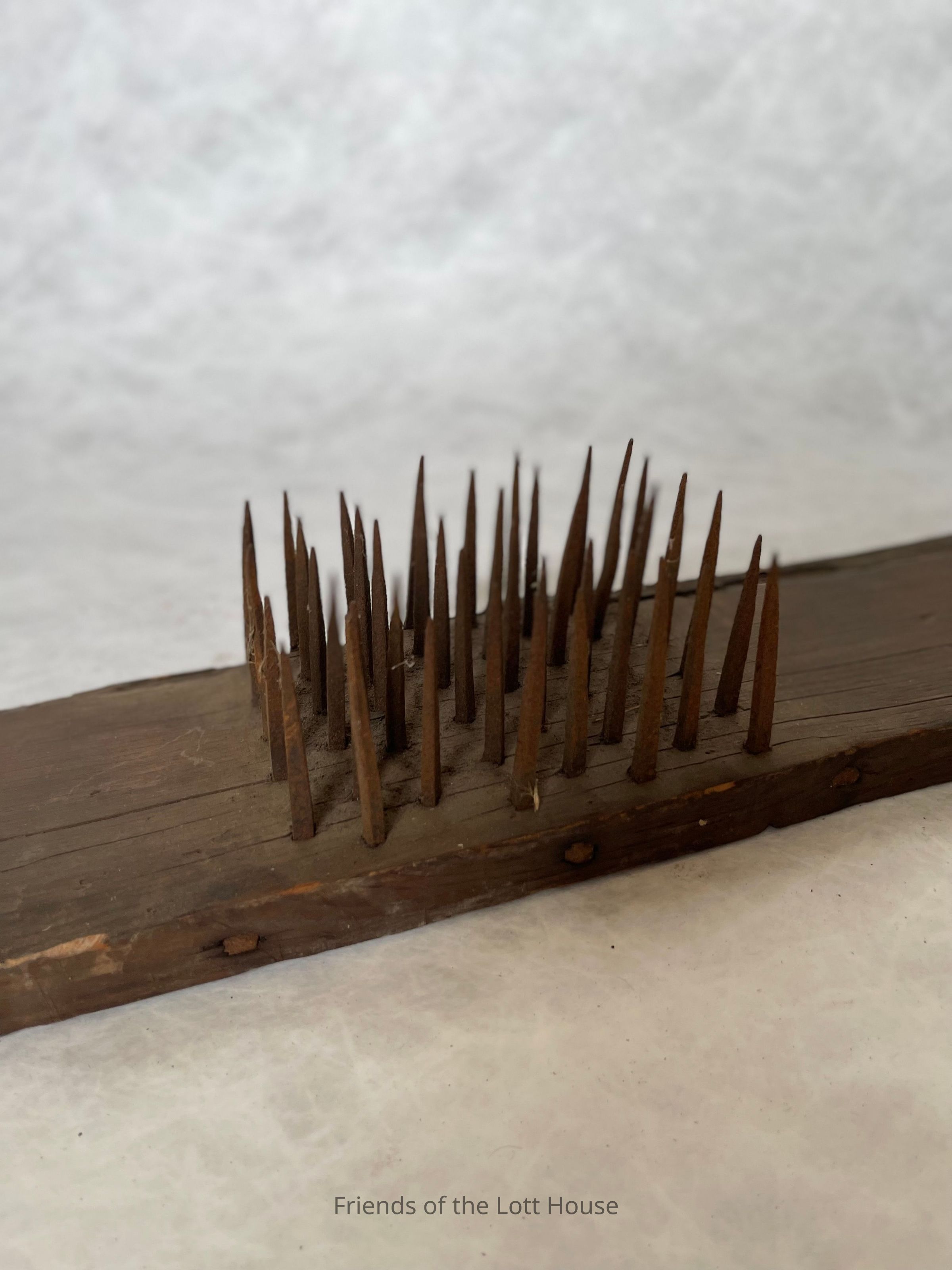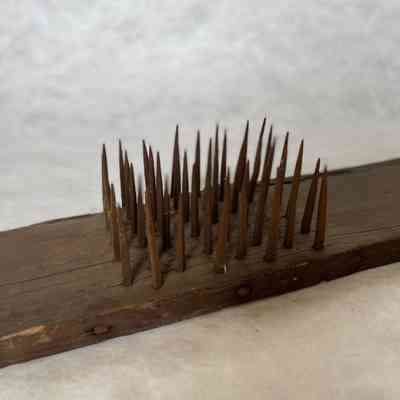Wool Comb

Combing wool would have been a regular and essential job on a farm that produced textiles. Workers carefully separated the wool into different layers using a wool comb, like the one pictured here. After shearing sheep or other animals, they sorted the wool to remove the undercoat from the coarser outer coat. This process helped prepare the fibers for spinning into yarn, which could be woven into fabric or used for knitting. The wool combs helped untangle, straighten, and clean the fibers, preparing them for the next stages of textile production. Combing wool was not just about separating fibers; it was also about improving the quality of the finished product. If workers did not comb the wool properly, they could create uneven or coarse yarn, which would affect the overall quality of the fabric. By using the combs, farmers could produce clean, smooth fibers that would spin into strong, durable yarn, which they could then turn into everything from clothing to blankets. The wool combs themselves came in various sizes. Smaller, handheld versions were helpful for smaller amounts of wool, often used in homes for personal textile production.
